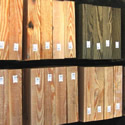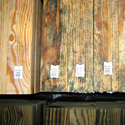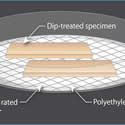Laboratory Mold and Stain on Wood in Storage Tests
The growth of timber and lumber treatment over the last 30 years, coupled with changes in the types of treatment used in various countries, has led to increased attention being paid to the propensity of treated wood stored wet after to treatment to develop mold.
While some have ascribed this to the presence or absence of various treatment components, in some cases such assertions are lacking, or even fly in the face of, scientific proof. Nevertheless, what is apparent is that the type and development of mold on stored wood held without drying is influenced greatly by the presence or otherwise of treatments, as well as the type of treatment. In other words, the plethora of mold spores all around in the environment inevitably leads to the development of mold on wood surfaces over time, and the types and colors of these will depend on the underlying substrate conditions. These facts make pure culture mold tests for testing control methods for these conditions, unrealistic.
Because of this, relatively crude approaches to mold in storage testing have proven to be quite effective in determining relative susceptibility of material in storage to mold, and also in the development of control methods and chemicals, as well as providing information about the longevity of protection under harsh conditions.
One such approach involved the use of discrete mini-stacks of wet treated lumber under plastic covering with a water source to provide high humidity, and with moldy wood included under the test array to provide a ready mold spore source. It should be noted that the molds that can occur on various treatments are often quite different from one another in color, a factor often neglected in assessing various materials. These methods have yet to be standardized.
Images
References


